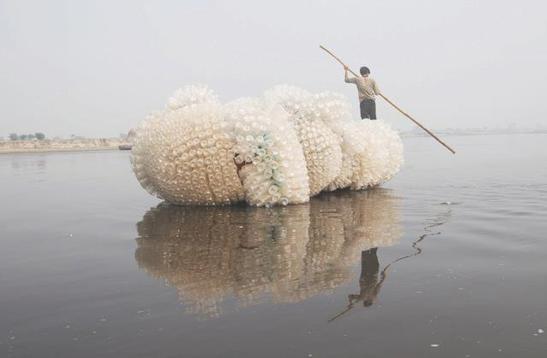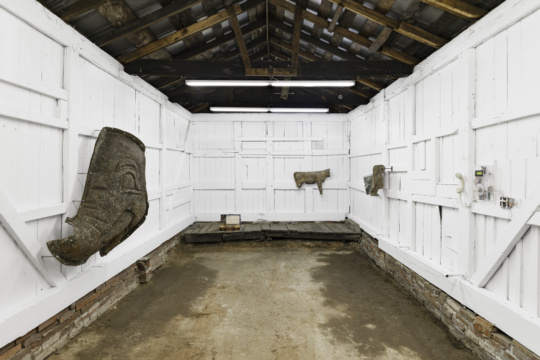
Out of the land of global consumerism, a river of plastic pollution flows daily into the Ocean. It infiltrates shallow bays as well as the deep waters of lanternfish, surrounds tropical islands, and draws plastic paths from Indonesia to Alaska, and from China to South America. The river feeds hungry birds, fish and whales, and washes their bodies on the shore where they fall apart in the sun, exposing their colorful plastic stomachs … GYRE is an eye-opening exhibition about serious global environmental crisis. Some of the best international artists alongside scientists come together to bring the scope of plastic pollution to our attention. The presented works made out of plastic debris are extremely beautiful and highly disturbing at the same time. This discordant combination of mental and visceral stimuli hits the spot, and the visitor is transformed from an observer into an environmental activist. Organized by the Anchorage Museum in Alaska, the exhibition GYRE: The Plastic Ocean is on view through June 19 at the David J. Sencer CDC Museum in Atlanta.
I asked Atlanta artist and activist Pam Longobardi, who is in the exhibition, to speak about the impact of plastic pollution. She answered via email from the island of Kefalonia in Greece, where she has been an artist in residence at the Ionian Center for the Arts and Culture.
[This article is an expanded version of a post that first appeared on Bojana Ginn’s blog Art and Science ATL.]
Bojana Ginn: What facts about the contamination are the most alarming?
Pam Longobardi: The scale range of plastic pollution is shocking. What we are now learning is that in addition to the highly visible human-sized and larger plastic objects invading the ocean, there is a silent and invisible miniature scale of threat—micro plastics—from the minute plastic beads (microbeads) that act as exfoliants in many skin care products and toothpastes to the myriad tiny threads of plastic fibers that our synthetic clothing (polyesters, nylons, lycra and more) sheds by the millions every time they are washed in washing machines. These fibers and beads are too small to be trapped by any munincle water system filter and so enter the ocean (and human) food chain at its base. Even though scientists now have an estimate of the numbers of visible pieces of plastic the ocean contains at 5.25 trillion pieces, we have no idea of the amount or dispersion of this micro-scale of plastic.
BG: What ideas and actions give the most hope for solving the problem?
PL: There is a global movement underfoot that is waking up the world to the insidious toxic danger of plastic. It is extensive and spreading and many people all over the world are realizing how we have been fooled into thinking plastic is normal and safe and okay for us and Earth’s creatures, when it is not.
BG: What do you see as the role of artists in the global sustainability movement?
PL: Art can function as a mirror, signal, warning, or transformation. For me, it is the most interesting place for art to exist.

This is an image of the stomach contents of an albatross chick Middleton observed for two months as its parents fed it garbage. The chick ultimately died with a full stomach impacted with plastic.

This large-format photograph—9 feet wide by 4 feet tall—is a bird’s eye view of more than 1,000 post-consumer sandals. The artist collected the discarded thongs, mainly on Australia’s more remote beaches.

Percoco sewed together more than 1,000 plastic bottles found in India’s Yamuna River to create this mobile public sculpture. For the “Gyre” exhibition, Percoco created a new site-specific, large-scale installation made from recycled plastic. The exhibition also includes photographic documentation of the Indra’s Cloud project.






